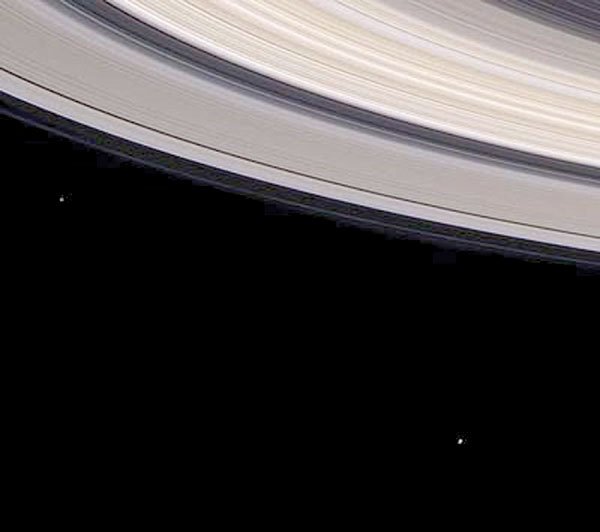Oct. 5 Moon and Saturn
The planet Saturn follows the last-quarter Moon as they ascend
the eastern sky tonight. The Moon rises before midnight, with
bright golden Saturn following it more than an hour later.
Oct. 5 Moon and Saturn
The planet Saturn follows the last-quarter Moon as they ascend the eastern sky tonight. The Moon rises before midnight, with bright golden Saturn following it more than an hour later.
Oct. 6 More Moon and Saturn
The planet Saturn rises around 1 am. It looks like a bright golden star, and lines up near the Moon as they climb the eastern sky before dawn.
Oct. 7 M31
The largest single object visible to the unaided eye is M31, the Andromeda galaxy. It looks like a small, faint smudge of light in the constellation Andromeda. It is well up in the northeast at nightfall and high overhead in late evening.
Oct. 8 Star Colors
Watch the stars on any moonless night, and you will see a multitude of colors: blue-white, yellow, orange and red. The colors reveal the star’s surface temperature. Combined with other information, they tell much about the star’s history and future.
Oct. 9 Moon and Venus
The Moon will slip past brilliant Venus the next couple of mornings. They are well up in the east at first light. Venus is the brilliant “morning star,” and stands to the lower right of the Moon tomorrow.
Oct. 10 More Moon and Venus
The planet Venus continues to reign as the brilliant “morning star.” It rises several hours before the Sun, and stands well up in the east at first light. Tomorrow, a thin crescent Moon stands just to the lower left of Venus.
Oct. 11 Cassiopeia
Cassiopeia, the queen, is high in the northeast during mid to late evening this month.The constellation looks the letter M or W. In Greek mythology, Cassiopeia was the queen of Ethiopia and mother of the princess Andromeda.
By The University of Texas McDonald Observatory













